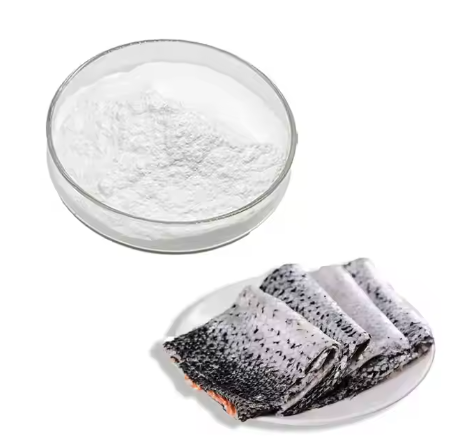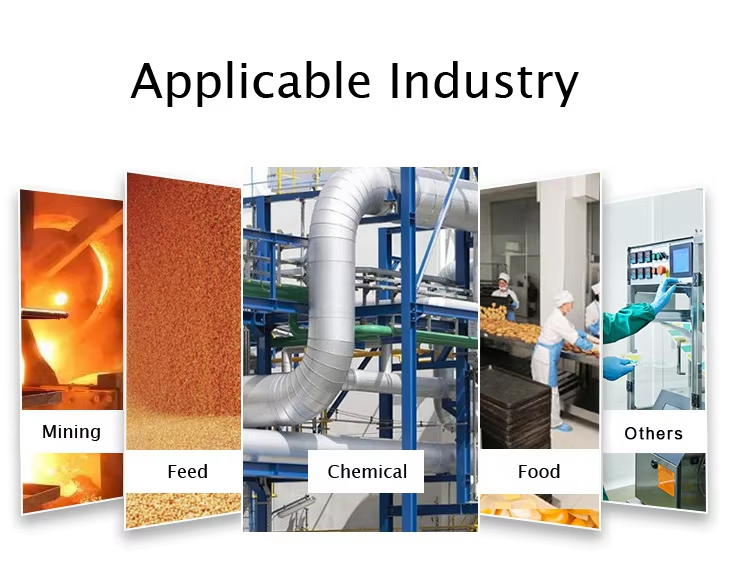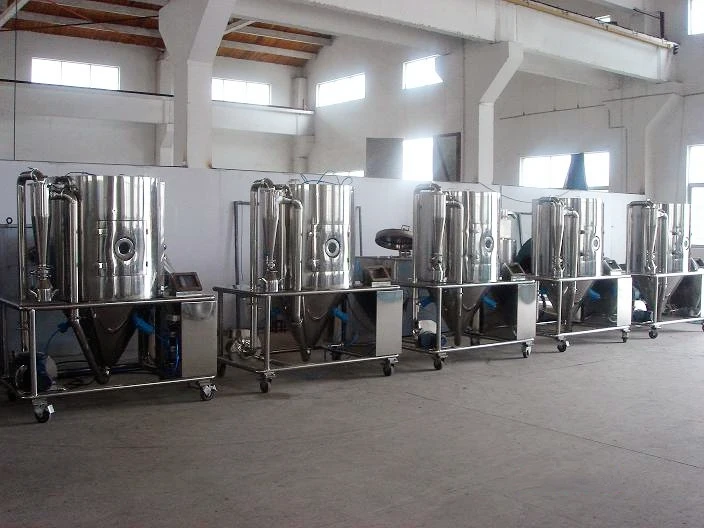什么是工业喷雾干燥机及其工作原理
You use an industrial spray dryer to turn liquids or slurries into dry powders in one step. The process starts when you atomize the feed into fine droplets and expose them to hot air for quick drying. This method works well for heat-sensitive products, such as milk powder and coffee powder. The food and beverage sector makes up nearly 33% of the demand, while the industrial spray dryer market is expected to reach 美元 9.51 Billion by 2034. You see spray dryers in 食物, 药品, 化学品, 和化妆品.
关键要点
Industrial spray dryers convert liquids into dry powders quickly, making them ideal for heat-sensitive products like milk and coffee.
Key components include the feed system, atomization devices, drying chamber, air handling systems, and product collection systems, each playing a vital role in the drying process.
Proper atomization is crucial; smaller droplets dry faster and more evenly, so adjust pressure and spray angle for finer powders.
Regular maintenance of the spray dryer, including checking nozzles and air filters, ensures high-quality powder and prevents breakdowns.
Choosing the right type of spray dryer, whether single-stage or multi-stage, depends on your product needs and desired powder quality.
Key Components of an Industrial Spray Dryer

When you look at an industrial spray dryer, you see several important parts working together. Each part has a special job that helps turn liquid into dry powder quickly and efficiently. Here is a quick overview of the main components and their functions:
Component | Function |
|---|---|
Feed System and Preparation | Prepares the feed solution for consistent drying results, including tanks, pumps, and delivery systems. |
Atomization Devices | Atomizes the feed into fine droplets, influencing particle characteristics and drying behavior. |
Drying Chamber Design | Facilitates contact between atomized feed and drying gas, affecting product quality and efficiency. |
Air Handling and Heating Systems | Provides thermal energy for drying and manages moisture removal from the product. |
Product Collection Systems | Collects the dried powder efficiently, optimizing yield and ensuring product quality. |
Let’s look at each component in more detail.
Atomizer or Spray Nozzle
You use the atomizer or spray nozzle to break up the liquid feed into tiny droplets. This step is very important because the size of the droplets affects how fast and how well the drying happens. Smaller droplets dry faster and more evenly. The atomizer can use different methods, such as high pressure or spinning disks, to create these droplets.
The way you set up the atomizer changes the droplet size and drying efficiency. Here is how different factors affect the process:
因素 | Effect on Droplet Size | Effect on Drying Efficiency |
|---|---|---|
Peripheral Speed | Decreases mean droplet size | Improves drying efficiency |
Vane Height | Decreases mean droplet size | Improves drying efficiency |
Number of Vanes | Decreases mean droplet size | Improves drying efficiency |
饲料率 | Increases mean droplet size | Reduces drying efficiency |
Viscosity | Increases mean droplet size | Reduces drying efficiency |
Surface Tension | Increases mean droplet size | Reduces drying efficiency |
Pressure | Reduces droplet size | Improves drying efficiency |
Spray Angle | Reduces droplet size | Improves drying efficiency |
提示: If you want a finer powder, you should use higher pressure and a wider spray angle.
干燥室
The drying chamber is where the magic happens. You spray the fine droplets into this chamber, and hot air flows through it. The chamber usually looks like a tall cylinder with a cone-shaped bottom. This shape gives the droplets enough time to dry before they reach the bottom.
Feature/Material | 描述 |
|---|---|
Structure | Typically a vertical cylindrical section with a conical bottom. |
Dimensions | Large diameter and height to accommodate the necessary residence time for drying. |
Atomization Method | Centrifugal atomizers require a large diameter to prevent droplets from sticking to walls. |
Design Variation | Some models have a nearly flat bottom with a rotating suction duct for product collection. |
You need the right chamber design to make sure the droplets dry completely and do not stick to the walls. This helps you get a better yield and higher product quality.
空气能热水器
You use the air heater to warm up the air that dries the droplets. The type of heater you choose affects how much energy you use and how safe the process is. Here are some common types:
Thermal Fluid Heaters: Good for high temperatures, but leaks can cause fire risks.
Direct Gas Heaters: Efficient and cheap, can reach very high temperatures, but not safe for food or medicine because of possible contamination.
Direct Electric Heaters: Great for small jobs, but electricity costs more than gas.
笔记: The right air heater helps you save energy and keeps your product safe.
粉末收集系统
干燥后, you need to collect the powder without losing any product. You can use different systems to do this:
High-efficiency cyclone separators capture powder from the air stream.
Bag filters stop powder from escaping with the exhaust air.
Special chamber designs reduce powder sticking to the walls, so you get more product.
一些 先进系统, like GEA HotSwirl and Clean Purge, help you recover even more powder and keep the process clean. SANICIP® II bag filters and No Intervention Fines Return Systems (NIFRS) also help you minimize product loss and improve powder quality.
Control Panel
The control panel acts as the brain of the spray dryer. You use it to set and monitor important settings like airflow, air temperature, and humidity. Keeping these settings steady helps you get the same product quality every time.
The control panel lets you adjust and automate the process.
You can keep the drying conditions stable, even if the feed changes.
Good control means you get better powder and less waste.
提示: Always check your control panel settings before starting a new batch to make sure you get the best results.
By understanding each component and how it works, you can run your industrial spray dryer more efficiently and produce high-quality powders every time.
Spray Drying Process Steps

Spray drying uses a series of steps to turn liquid feed into dry powder. You need to understand each step to get the best results from your industrial spray dryer. Here is how the process works:
饲料准备
You start by preparing the liquid feed. This step sets the foundation for the entire process. You need to make sure the feed has the right consistency and composition. You measure key parameters like total solids, 湿度, and temperature. These values help you control the drying process and product quality.
Key Parameter | 描述 |
|---|---|
Total Solids (TS) | Measures the soluble solid content of the feed. |
Humidity | Monitors the moisture content in the air. |
温度 | Tracks the heat levels during the drying process. |
You mix, filter, and sometimes heat the feed to reach the desired state. If you skip this step or rush it, you may get uneven powder or lose valuable product.
提示: Always check your feed for lumps or clumps before moving to the next step. Smooth feed gives you better powder.
雾化
下一个, you atomize the liquid feed. You use an atomizer or spray nozzle to break the liquid into tiny droplets. The size and uniformity of these droplets affect how well the powder dries and what the final product looks like.
优点 | 局限性 | 液滴尺寸控制 | |
|---|---|---|---|
喷嘴雾化器 | Precise control over droplet size and distribution. Versatile for various feed viscosities. Energy efficient. Simple design. | Prone to clogging. Limited capacity. High pressure requirements. | High precision in droplet size uniformity. |
旋转雾化器 | High capacity for large volumes. Flexible with feed properties. Produces a wide range of particle sizes. Lower pressure requirements. | Complex design. Less precision in droplet size uniformity. Higher energy consumption. Noise and vibration issues. | Less control over droplet size uniformity. |
You choose the atomizer based on your product needs. Nozzle atomizers give you fine, uniform powder. Rotary atomizers work better for large batches and thicker feeds.
Contact with Hot Air
After atomization, you send the droplets into the drying chamber. 这里, hot air meets the droplets and starts the drying process. The temperature of the air plays a big role in how fast and how well the powder dries.
Outlet temperatures usually range from 90°C to 110°C.
For heat-sensitive products, such as vaccines, you keep the outlet temperature below 100°C.
Advanced drying methods use inlet air between 130°C and 190°C to protect sensitive enzymes and still remove moisture efficiently.
You control the air temperature to protect your product and get the best drying results. If you use too much heat, you may damage sensitive ingredients. If you use too little, you may not dry the powder completely.
Moisture Evaporation
When hot air contacts the droplets, moisture starts to evaporate. You need to watch several factors to control how fast this happens. Air temperature, air flow rate, liquid feed rate, 湿度, and droplet size all affect the evaporation rate.
Higher air temperatures and faster air flow rates speed up evaporation.
Smaller droplets dry faster than larger ones.
You estimate evaporation rates using models that track mass, momentum, and energy exchanges between air and droplets.
You adjust these settings to get the right moisture level in your powder. If you dry too quickly, you may get brittle or uneven powder. If you dry too slowly, you may waste energy and time.
笔记: Consistent evaporation helps you make powder with the same quality every time.
Powder Separation
Once the droplets dry, you need to separate the powder from the air. You use special systems to collect the powder and keep it clean.
Cyclones separate dried particles from the exhaust gas stream.
Bag filters help recover even more powder and prevent loss.
The choice of recovery system affects your yield and efficiency.
You want to collect as much powder as possible without letting it escape into the air. Good separation systems help you get more product and keep your workspace clean.
Step Number | Step Name | 描述 | Typical Duration |
|---|---|---|---|
1 | Feed Liquid Preparation | Preparation of the feed liquid in the desired consistency. | 不适用 |
2 | 雾化 | Atomizing the liquid into small droplets for effective drying. | 不适用 |
3 | Drying in the Drying Chamber | Mixing droplets with hot air to lose moisture and form solid particles. | A few seconds to a minute |
4 | Powder Separation | Separating the dried powder from the hot air stream. | 不适用 |
5 | Cooling and Packaging | Cooling the powder to prevent clumping or degradation. | 不适用 |
😊 If you follow each step carefully, you can produce high-quality powder with your industrial spray dryer.
Types of Secador Spray Industrial
When you choose a industrial spray dryer, you need to know the main types and how they work. Each type has special features that help you get the best results for your product.
Single-Stage
You use a single-stage industrial spray dryer when you want to dry liquids in one step. This type works well for many products in food, 药品, 和化学品. You spray the liquid into the chamber, and hot air dries it quickly. You collect the powder at the bottom.
Here is a table showing common uses for single-stage spray dryers:
行业 | 应用领域 |
|---|---|
食品加工 | 动物饲料, 咖啡, Milk powders, Spices, Tea, Pet food, Plant proteins |
制药 | Antibiotics, Enzymes, 疫苗, Vitamins |
Industrial | 陶瓷, 洗涤剂, 化肥, Paint pigments |
Single-stage models give you fast drying and simple operation. You get good results for products that do not need extra drying steps.
Multi-Stage
You use a multi-stage industrial spray dryer when you need better control over drying and product quality. Multi-stage dryers add extra steps, like a fluidized bed, after the first drying. This helps you cool and finish the powder.
Let’s compare single-stage and multi-stage dryers:
方面 | Multi-Stage Dryers | Single-Stage Dryers |
|---|---|---|
Drying Uniformity | More uniform drying | More variation in drying |
Material Quality | Better for heat-sensitive materials | May damage sensitive materials |
水分控制 | Higher efficiency | Less precise |
Multi-stage industrial spray dryer models help you save energy and protect delicate ingredients. You get powders with better texture and moisture levels.
Nozzle vs Rotary Atomizer
You need to pick the right atomizer for your industrial spray dryer. Nozzle atomizers use high-pressure air to create droplets. Rotary atomizers use a spinning wheel.
Here is a table to help you compare:
特征 | 喷嘴原子剂 | 旋转雾化器 |
|---|---|---|
Piping System | Complex, many feed pipes | Simple, one feed pipe |
维护 | Easy, replace nozzle parts | Harder, need spare atomizer |
Energy Supply | 气压 | Motor-driven |
Spare Parts | Spare nozzles, air compressor | Spare rotary atomizer |
Nozzle atomizers let you adjust powder density and make maintenance simple.
Rotary atomizers work well for large batches and thick solutions. You get higher drying capacity and can handle products with more solids.
提示: If you want easy cleaning and less agglomeration, choose a nozzle atomizer. If you need to dry large amounts or sticky products, a rotary atomizer may work better.
You should match the industrial spray dryer type to your product and process needs. This helps you get the best powder quality and efficiency.
应用领域, Pros, and Cons
Industrial Uses
You find industrial spray dryer equipment in many industries. These machines help you turn liquids into powders quickly and safely. Here are some common uses:
Food processing: You can make milk powders, 咖啡, protein isolates, and flavor encapsulates.
药品: You create inhalable drugs with even particle sizes.
生物技术: You stabilize enzymes and probiotics for longer shelf life.
陶瓷, 催化剂, and battery materials: You get powders with consistent shapes.
New fields: You see industrial spray dryer systems used for bioplastics and biodegradable composites.
A real-world example shows how a powdered food manufacturer improved product quality and efficiency by upgrading the controls on an older spray dryer.
优点
When you use a industrial spray dryer, you gain many benefits:
You get 粒径均匀 and consistent products.
You protect heat-sensitive materials with fast drying.
You can scale up production without losing quality.
You make powders that dissolve easily in water.
You achieve high production rates for large orders.
You can adjust settings to get the powder properties you want.
You extend shelf life by lowering moisture content.
You save energy compared to other drying methods.
You reduce handling and storage costs.
Low-adhesive surfaces in spray dryers can boost your yield by up to 16.5% and cut energy use by 14.2%. Some plants have increased business value by $4 million by optimizing their operations.
局限性
You may face some challenges with spray drying:
Cross-product contamination can happen if you do not clean equipment well.
Scaling up from lab to factory can give different results.
Using the wrong atomizer can cause uneven particle sizes.
Large clumps may form if moisture stays too high.
Incomplete drying can leave too much moisture in your powder.
Selection and Maintenance
You should consider several factors when choosing a spray dryer:
因素 | 描述 |
|---|---|
Atomization method | Match to your product’s viscosity and desired particle size. |
Processing capacity | Pick a size that fits your production needs. |
热源 | Think about energy costs and drying speed. |
Equipment material | Use stainless steel for food and medicine. |
自动化 | Choose controls that help you keep quality high. |
To keep your industrial spray dryer running well, follow these steps:
Inspect nozzles and replace worn parts.
Check air filters and fans for good airflow.
Lubricate bearings and fans as needed.
Calibrate sensors for temperature and pressure.
Keep a maintenance log.
Train your team on best practices.
提示: Regular care helps you avoid breakdowns and keeps your powder quality high.
You use an industrial spray dryer to turn liquids into powders quickly and efficiently. Understanding each part and process helps you get the best results. Spray dryers offer high throughput and produce uniform powders, but they require careful maintenance and higher initial investment. 新技术, like smart controls 和 energy-saving systems, make these machines even more efficient and eco-friendly. When you choose a spray dryer, consider your production needs, operating costs, and future growth to ensure long-term success.
常问问题
What products can you dry with an industrial spray dryer?
You can dry milk, 咖啡, 鸡蛋, 口味, 维生素, 陶瓷, and detergents. Many industries use spray dryers to make powders from liquids or slurries.
如何清洁喷雾干燥机?
You should follow a cleaning schedule. Use water or cleaning solutions to wash the chamber, nozzles, and filters. Always check for leftover powder to prevent contamination.
Is spray drying safe for heat-sensitive materials?
是的. Spray drying uses quick drying at controlled temperatures. This protects vitamins, 酶, and medicines from heat damage.
How do you choose the right spray dryer size?
第一的, check your daily production needs. 然后, look at the feed type and powder properties. You should also consider space and energy use.






